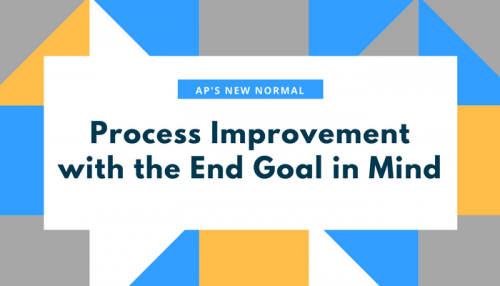AP’s New Normal: Process Improvement with the End Goal in Mind
Blog: Kofax - Smart Process automation
Seeing metrics from best-in-class accounts payable departments is a powerful point of comparison for organizations that haven’t yet optimized their purchase-to-pay processes. Ardent Partners’ 2016 ePayables report lists “best-in-class” stats for accounts payable alongside average metrics for “all others.” Best-in-class AP departments, explains the report, are the top 20 percent of performers “who are effective and efficient in supporting strategic business objectives, while working as a key collaborator with both internal stakeholders and external suppliers.”
But it’s not enough to simply internalize these metrics and know your organization has some ground to cover. Whereas AP and purchase-to-pay as a whole used to have a strictly tactical function, cutting-edge technology and an effort to change outdated perceptions are pushing them into a new paradigm for performance. The new normal is a focus on continuous performance improvement that leads to more strategic roles for purchase-to-pay and its personnel.
Put your AP metrics on the best-in-class scale
Best-in-class per-invoice processing costs just $2.87, while all others pay an average of $15.38 per invoice. That’s a huge difference (an 81% difference, in fact). What does your company pay per invoice? And where do you fall in terms of cycle time, exception rate and percentage of supplier invoices submitted electronically? Shifting into a continuous improvement mindset starts here. Get active in benchmarking your AP metrics against the best.
Stand on the shoulders of giants
According to Ardent Partners, AP departments who are truly committed to driving change need to pay close attention to the “key capabilities, strategies, and solutions that best-in-class AP teams utilize in their continuing transformation efforts.” For example, 81 percent of best-in-class enterprises use standard AP processes company-wide, 80 percent have two or three-way matching capabilities, and 71 percent have the ability to process invoices straight through.
When drilling down to technology usage, it’s important to note that the top performers are 77 percent more likely to have adopted a complete purchase-to-pay solution. Why? P2P solutions align accounts payable with procurement, which “occupy two sides of the same process.” Visibility throughout the entire process, as well as a significant increase in efficiency, offer much greater value than only focusing on AP.
Actively work to change perceptions
Best-in-class purchase-to-pay organizations are good at utilizing data and collaborating with other departments and key business stakeholders. And company leadership recognize their contributions. For the 80 percent of enterprises that haven’t achieved this status, however, there’s work to be done to shift perceptions about accounts payable and procurement. Having a solid grasp of key benchmarking metrics, knowing how your CFO is evaluating your performance and working on interdepartmental collaboration are key strategies in outperforming across the purchase-to-pay organization.
The AP and Procurement Performance Playbook provides more stats and strategies you can use to help break free from current perceptions and drive change in your enterprise.
Download the playbook now >
Leave a Comment
You must be logged in to post a comment.







